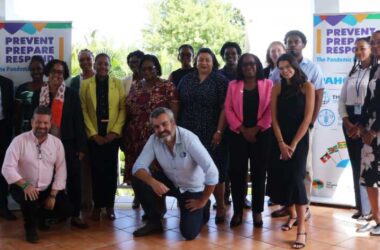A RECENT survey conducted by the Pan American Health Organization/World Health Organization (PAHO/WHO) indicates that the COVID-19 pandemic has disrupted diagnosis and treatment of viral hepatitis B and C infections in Latin America and the Caribbean, slowing progress on the goal of eliminating these infectious diseases by 2030.
This survey was undertaken in advance of the July 28 World Hepatitis Day, which is celebrated annually to raise awareness about viral hepatitis, a group of infectious diseases that cause inflammation of the liver and can lead to cirrhosis and liver cancer. In the Americas, some 5.4 million people live with hepatitis B infections, while 4.8 million are infected with hepatitis C. This year, the campaign is focused on the PAHO/WHO goal of eliminating hepatitis B and C by 2030, with a theme “hepatitis can’t wait.”
“Elimination of viral hepatitis B and C infections by 2030 is an achievable goal for improving health and well-being throughout the Americas,” said Pan American Health Organization (PAHO) Director Carissa F. Etienne. “But the pandemic has slowed our progress. We must redouble our efforts to keep hepatitis elimination on track. People living with viral hepatitis can’t wait.”
The PAHO/WHO survey, known as the national pulse survey on continuity of essential services during the COVID-19 pandemic, indicates that more than half of the 18 Latin American and Caribbean countries surveyed reported some level of disruption in the diagnosis and treatment of hepatitis B and C. Seventeen percent of the countries surveyed reported severe interruptions that affected primarily new diagnoses and treatment.
In the face of such disruption, PAHO/WHO has renewed its call for countries to sustain hepatitis testing, prevention, vaccination, and treatment services while integrating them into primary health care. PAHO/WHO also recommends that all newborns are vaccinated against hepatitis B and receive at least two additional vaccine doses within a year of birth to be protected for life.
WHO viral hepatitis C estimates indicate that each year, there are about 67,000 new infections and 84,000 deaths in the Americas. Antivirals can cure more than 95% of those infected with hepatitis C, but only 22% of chronically infected people are diagnosed, and only 18% of them have received treatment.
WHO data also shows that there are 10,000 new viral hepatitis B infections and 23,000 deaths annually in the Americas. Only about 18% of people living with hepatitis B have been diagnosed and only about 3% of them are receiving treatment.
“Hepatitis is a serious but highly treatable disease,” Dr. Etienne said. “However, we are a long way from ensuring that everyone who has hepatitis is getting the services that could mean recovery for them. We cannot afford to neglect hepatitis.”
“Vaccination has enabled the elimination of early childhood transmission of hepatitis B in the Americas, but childhood vaccination rates have also decreased, threatening that achievement,” she continued. “We cannot let our progress be eroded.”
PAHO’s Strategic Fund has helped some countries access direct-acting antivirals (DAA), which can cure hepatitis C in three months. However, many countries are not scaling up the treatment because prices are still a barrier for many people.
In 2019, PAHO launched its Elimination Initiative to end more than 30 infectious diseases in the Region by 2030, including viral hepatitis. To achieve this, health systems must ensure access to testing and treatment for all people with viral hepatitis, as well as preventive measures such as vaccination.













